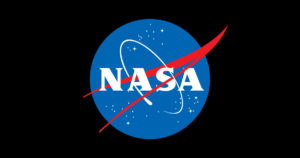
NASA Lists Hazards That May Come In Way To Conduct A Manned Mission To Mars
Most recently, NASA has decoded some hazards that astronauts may face forever on the Red Planet and is in the process of making a bid to overcome the obstacles that may come during a human journey to Mars.

Human Research Programme (HRP) of the space agency is using ground-based analogues, laboratories and the International Space Station (ISS) to be able to evaluate human performance and countermeasures need to explore Mars which is expected to be in the year 2030.
The hazards were divided into five classifications by the team – radiation; isolation and confinement; distance from Earth; gravity (or lack thereof); hostile or closed environments.

“Above Earth’s natural protection, radiation exposure increases cancer risk, damages the central nervous system, can alter cognitive function, reduce motor function and prompt behavioral changes,” NASA said in a statement on Monday.
To lessen this, there will be deep space vehicles that will have significant protective shielding, alerts, and dosimetry.
And to ensure that they can work effectively work as a team for many months or even years in space, care is being taken in choosing them and then they were given training and support.
Factors like sleep loss, circadian desynchronization and work overload compound issue isolated and confined and may lead to performance decrements,
Another hazard is that the distance of Mars from Earth. On average, Mars is about 140 miles from Earth and as the astronauts would be leaving for almost three years.
If there is, for example, any astronauts aboard the ISS encounter a medical event or emergency event, the crew can easily return home within hours of it. Moreover, cargo vehicles go on with their supply of fresh food, medical equipment, and many other resources.
However, once you start burning your engines for Mars, there is no question of turning back and resupply.
“Facing a communication delay of up to 20 minutes one way and the possibility of equipment failures or a medical emergency, astronauts must be capable of confronting an array of situations without support from their fellow team on Earth,” NASA said.
One of the issues that a human mission to Mars may face is the variance of gravity.
Presently, NASA is following a procedure about how to identify, US Food and Drug Administration approved osteoporosis treatments could be used to mitigate the risk for astronauts developing the premature bone loss condition.
The spacecraft bound to the planet Mars will also include important habitability factors like temperature, lighting, noise and pressure and quantity of space. Along with that its essential that astronauts get the requisite food, sleep, and exercise that is needed to stay healthy and happy.
“While these five hazards present significant challenges, they also offer opportunities for growth and innovation in technology, medicine and our understanding of the human body,” the space agency stated.
You May Also Read: World’s Biggest Mobile Experience Centre Inaugurated By Samsung In Bengaluru